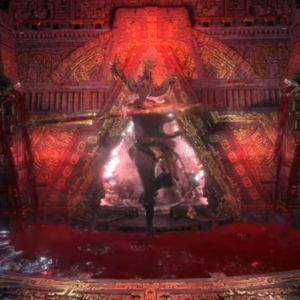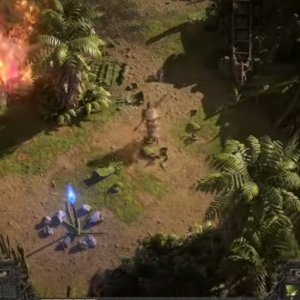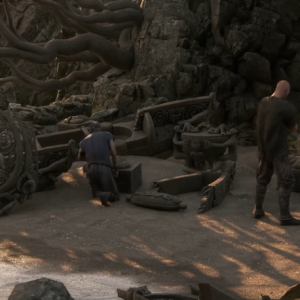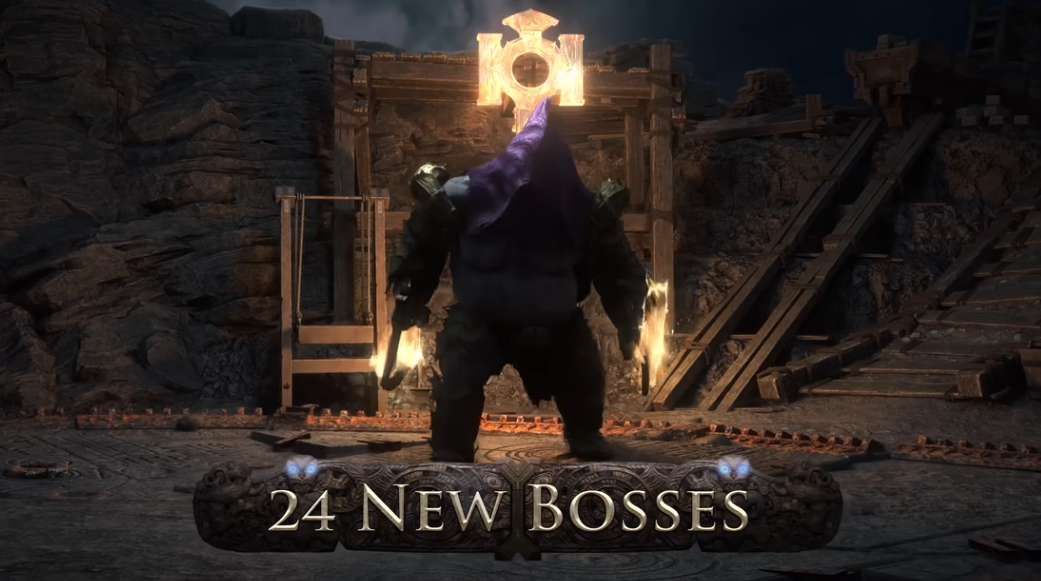Path of Exile 2 (PoE2) is quickly becoming the sandbox of mechanical depth and theorycrafting mastery that players always dreamed of. With each new patch, it continues to blur the line between genius and madness when it comes to how damage, ailments, and skill synergies interact. The recent 0.3 update has proven to be no exception. Two new systems—Riven Armor and Herald of Blood Chaining—have completely reshaped the meta, paving the way for a build that’s as broken as it is brilliant: the Riven Poison Build.
This build is a masterclass in exploiting POE 2 Exalted Orbs revamped ailment system, leveraging “unscalable” mechanics to achieve millions of damage per second using what is, quite literally, a level one weapon. But don’t let the low item level fool you—this setup is a demonstration of how deep and flexible Path of Exile 2’s combat design truly is.
- Understanding the Core: Riven Armor and Its “Unscalable” Power
At the heart of this build lies the Riven Armor debuff—a new mechanic introduced in patch 0.3 and exclusive to the High Velocity Rounds skill. Riven Armor activates only after hitting a fully armor-broken enemy, storing 5% of the physical damage dealt by that hit. For the next five seconds, that stored damage is added to every subsequent attack made against that enemy.
In short: every hit after the first gets free bonus damage equal to 5% of that devastating initial hit.
The twist? That bonus damage is unscalable—it can’t be increased by normal modifiers or multipliers. At first glance, that might sound like a limitation. In reality, it’s the key to one of the most potent damage loops in the game.
Why? Because in PoE2, ailments such as poison and bleed no longer function like they did in Path of Exile 1. In the original game, ailments used your base damage—the flat sum before modifiers—to determine their strength. But in Path of Exile 2, ailments are now based on your final hit damage, after all increases, multipliers, and crit bonuses are applied.
That means every crit, support gem, and passive that increases hit damage also boosts ailment damage. The only exception is that ailments use the pre-mitigation value of your hit—meaning monster resistances or armor don’t affect them.
This is where Riven Armor’s “unscalable” nature breaks the rules. Its damage bonus, though unmodifiable by traditional scaling, applies directly to ailment calculations, essentially bypassing the entire hit calculation system. This allows poisons inflicted after a Riven Armor proc to scale absurdly high, even when using the weakest of weapons.
- The Splinter of Loretta and Infinite Poison Stacking
To make the most of Riven Armor’s stored damage, we combine it with another powerful component: The Splinter of Loretta. This weapon modifier fundamentally changes how poisons stack. Normally, Path of Exile 2 caps poison at a single stack—limiting how much damage-over-time you can apply to a single enemy. But Splinter of Loretta removes that cap entirely, allowing for infinite poison stacks, and grants 100% chance to poison with every hit.
So, if one poison is good, infinite poisons are better.
From here, the plan is simple: hit enemies as fast as possible to layer dozens—if not hundreds—of poison stacks, each empowered by Riven Armor’s “unscalable” stored damage.
The Fearfield skill becomes the weapon of choice here. Fearfield can hit up to 20 times per use, making it a perfect pairing for infinite stacking. Supporting gems like Rapid Attacks, Concentrated Area, and Rig’s Ferocity amplify the number of hits per second while maintaining powerful single-target potential.
Because Riven Armor’s bonus damage doesn’t scale up or down, we completely ignore the “less damage” penalties on our support gems. The result is a build that looks mechanically inconsistent—but in practice, melts everything in sight.
- Solving the Consistency Problem
Of course, there’s one catch—damage rolls in Path of Exile 2 aren’t static. If your High Velocity Rounds low-rolls its damage, your entire Riven Armor window will be weak for five seconds, and so will your poison. Even worse, once applied, Riven Armor cannot be refreshed or removed early—you have to wait out its full duration before applying it again.
To make sure your key hit is always strong, the build employs two powerful tools: Amazon’s Penetrate Node and Lineage Support: Resolve (Gaukan’s Resolve).
Amazon’s Penetrate
This node takes 25% of your weapon’s accuracy rating and converts it into flat physical damage—but applies that value equally to both your minimum and maximum hit damage. Normally, added damage sources have a range (for example, +10 to +50 physical damage), which increases variance between hits. But Penetrate smooths out that variance, giving consistent results every time.
It’s a deceptively powerful modifier: even a modest 270 DPS crossbow using this node can outperform a typical 880 DPS weapon in this build, thanks to the uniformity of its added damage.
Gaukan’s Resolve
This new lineage support introduces the concept of bifurcating crits. Essentially, your critical strike chance rolls twice, and the higher result is taken—creating “lucky crits.” If both rolls succeed, you land a Giga Crit, dealing double your usual critical multiplier.
This combination of consistent base damage (via Penetrate) and enhanced crit reliability (via Resolve) ensures that every five-second Riven Armor cycle hits as hard as possible, maximizing poison scaling and ensuring stability even during long boss fights.
- Herald of Blood Chaining – The Explosive Companion System
The second “new tech” that elevates this build beyond simple poison stacking is Herald of Blood Chaining. While the Riven Poison setup already delivers absurd single-target damage, Herald of Blood brings an entirely different flavor of carnage to your screen—chain explosions that wipe entire packs of enemies in seconds.
Here’s how it works:
Normally, Herald of Blood causes bleeding enemies to explode on death, dealing area damage based on their bleed value. However, those explosions cannot apply bleed again, which prevents infinite chain reactions. That limitation disappears when you combine the right support gems and an extra herald.
By linking Herald of Blood with Bleed, Poison, and Bursting Plague support gems—and pairing it with Herald of Plague—you get a feedback loop of death and contagion.
Step 1: Use Siege Cascade (linked with Bleed 3) to apply guaranteed, heavy bleeds across a group of enemies.
Step 2: When a bleeding enemy dies, Herald of Blood triggers an explosion. Thanks to Poison 3 support, that explosion has a 60% chance to apply poison to nearby targets.
Step 3: When something is both bleeding and poisoned, its death activates three triggers: Herald of Blood, Bursting Plague, and Herald of Plague.
Herald of Plague spreads the highest damage poison in range to all nearby enemies.
Bursting Plague creates another explosion, this time scaling with poison damage instead of bleed.
And here’s the kicker: Bursting Plague can apply bleed—restarting the entire chain reaction.
The end result? Every enemy that dies spreads poison and bleed to everything else nearby, causing screens full of overlapping explosions. While the build doesn’t need this chaining to function—Siege Cascade already handles AoE quite well—the interaction creates one of the most visually and mechanically satisfying gameplay loops in the entire game.
It’s chaotic, it’s brutal, and it’s probably not going to survive patch 0.4.
- Defenses – Blue HP, Evasion, and Deflection Synergy
All the offensive power in the world doesn’t matter if you’re dead. That’s why this build doesn’t rely solely on glass-cannon mechanics—it packs a surprisingly sturdy defensive foundation.
The key is going Blue HP hybrid, stacking Evasion and Deflect for layered defense. Using the Stalking Panther node allows the build to skip normally mandatory defensive passives like Subdue Mask and Spectral Ward. Instead, we invest in pure Evasion on the helmet, gloves, and boots, and pure Energy Shield on the body armor.
Since the build already needs plenty of Intelligence for curses like Despair, this hybrid gearing works perfectly.
At level 92, the setup reaches:
4,000 total HP (Life + ES)
65% evade chance
42% deflect chance
That translates to a 65% chance to take zero damage and a 42% chance to take 40% less damage whenever hit.
For sustain, we use Ghost Dance to recover around 1,200 Energy Shield every time we’re struck, supported by Life and Mana leech on jewelry. It’s an elegant balance—offensive uptime with respectable survivability.
- Quality of Life and Final Touches
PoE2’s pacing can feel sluggish if your mobility isn’t optimized. To keep the Riven Poison build smooth, we run boots with 45% reduced movement penalty while using skills, stacking up to 53% total reduction through passive bonuses. This keeps you fluid in combat even while using heavy-hitting crossbow abilities.
If currency allows, slot in the Ratha’s Assault Lineage Support in your Siege Cascade setup. It removes the reload mechanic entirely—an issue that still appears bugged even after multiple fixes. With Ratha’s Assault, your attacks flow uninterrupted, letting you focus purely on positioning and targeting.
And as for gear priorities: accuracy and attack speed outweigh raw DPS. Since Riven Armor’s damage bonus ignores scaling, consistency beats spikes.
- The Philosophy Behind the Build
What makes the Riven Poison build so fascinating isn’t just that it’s powerful—it’s that it demonstrates the depth of Path of Exile 2’s mechanical systems. It takes a debuff designed to be “unscalable,” and through clever interaction with the ailment system, turns it into an infinite-scaling damage engine.
It proves that understanding how and when damage is calculated is more important than simply stacking stats cheap POE 2 Exalted Orbs. It rewards experimentation, timing, and deep mechanical insight—the hallmarks of what makes PoE theorycrafting so rewarding.
- Final Thoughts
The Riven Poison build is a perfect encapsulation of Path of Exile 2’s evolving identity. It’s complex, rewarding, and hilariously overpowered when executed properly. It merges two distinct systems—Riven Armor’s stored damage and Herald of Blood’s chain mechanics—into a seamless cycle of destruction.
Whether it survives future patches is anyone’s guess. But for now, it stands as a monument to creativity within PoE2’s design space. It’s a build that doesn’t just break numbers—it breaks conventions.
In a game where most players are still testing new mechanics, the Riven Poison build is already rewriting them.







